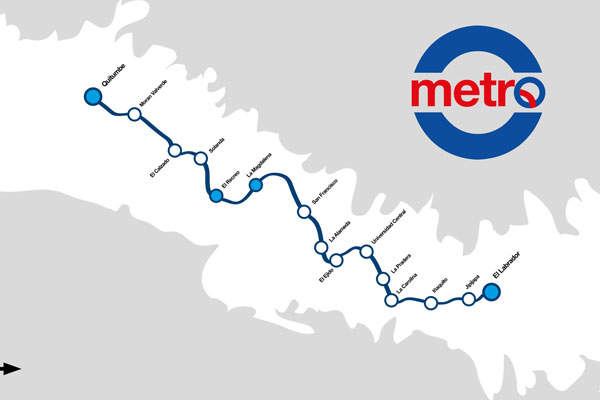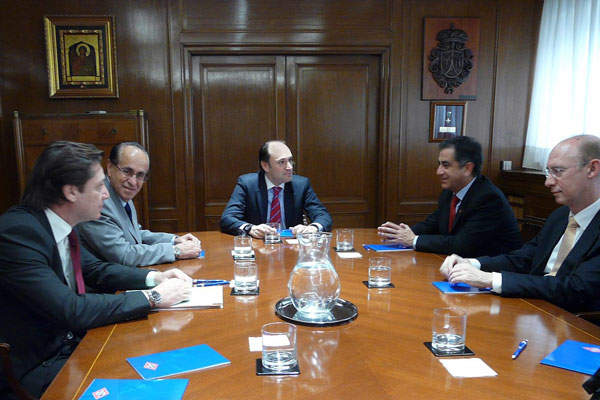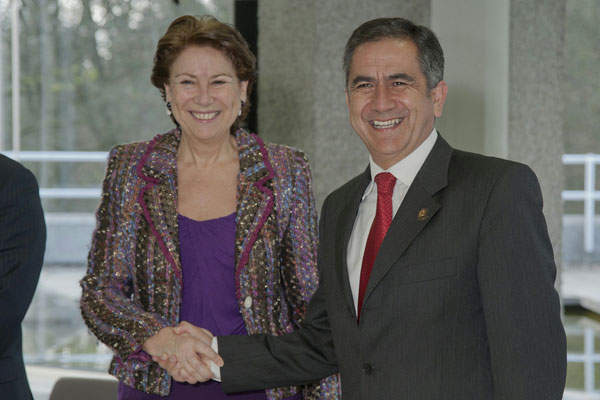Metro de Quito, also known as Quito Metro, is an underground rail mass transit system currently under construction in Quito, the capital of Ecuador. The new metro is expected to be operational by 2017.
The construction works for the 22km-long Line 1 of the metro system started in January 2013. Plans to construct Lines 2, 3 and 4 are also being considered.
Line 1 will run from Quitumbe bus terminal in the south of the capital city to the Mariscal Sucre Airport in the north reducing the journey time between the two ends of the line to just 34 minutes. It will comprise of 15 underground stations and is estimated to cost $1.68bn to build.
Related content
Lima Metro, Peru
Lima Metro, also called Tren Eléctrico, is a rapid transit metropolitan railway that serves Lima, the capital city of Peru.
Quito Metropolitan Government will own the project, while Metro Public Company Metropolitan Quito will operate the system.
Metro de Madrid was selected in October 2011 to carry out technical support studies for Line 1 of the metro. The current project is expected to generate 3,000 construction jobs and 800 permanent jobs. It will reduce greenhouse gas emissions by more than 25 million tonnes per year.
The metro is initially expected to accommodate approximately 378,000 commuters daily and cater to 500,000 commuters by 2030.
Metro de Quito development details
Plans to construct a metro for the Quito city were initiated in March 2009. Metro Quito Specialized Unit was created in December 2009 to develop the metro project.
Feasibility studies for the project were started in October 2010 and completed in June 2011. Engineering design for the Line 1 was completed in May 2012.
Details of the Ecuador’s Quito metro
The Metro de Quito Line 1 is being built in two phases. Phase one involves the construction of two stations at La Magdalena and El Labrador respectively. The El Labrador station will link the Line 1 to the Carapungo-Jipalpa Express. The La Magdalena Station is being constructed at a former site of the Army Corps of Engineers.
The tunnelling works for the stations are being carried out using the cut-and-cover method, where a shaft is first drilled down to enable access for the tunnel boring machine (TBM).
Phase 2 of the underground metro project will involve tunnelling works to lay the track, construction of the remaining 13 stations, a maintenance depot, shafts, and procurement of advanced rolling stock. Two TBMs are expected to be used for the tunnelling works under Phase 2.
It will further involve the installation of fire protection systems, elevators and escalators, ventilation, electrical substations, power distribution system, signalling and communication system, electrification, fare collection and control system, and station control system.
Contractors involved with the Metro de Quito project
ACCIONA Infrastructure is carrying out the construction works for the first phase under a contract worth €75m ($102.97m) awarded in November 2012.
GMQ Spanish consortium comprising of KV Consultants Engineering, Project and Construction, and PROINTEC was selected in July 2013 as the technical adviser for the Phase 2 construction of the Line 1.
Rolling stock, signalling, and communication systems
The Line 1 will feature 18 conventional heavy underground railway-type trains. Each train will feature six cars accommodating up to 1,500 passengers per trip, and will run at an average speed of 37km/h. The trains will run at an interval of four minutes, while the distance between the stations will range from 500m to 1,500m.
The trains will feature video-surveillance systems with two cameras in each wagon, train-land communication systems, wireless broadband systems, advanced communication-based train control (CBTC) protection and automatic driving systems, and other fire detection and extinguishing systems.
Financing for the metro project
The European Investment Bank (EIB), the Inter-American Development Bank (IDB) and the Andean Development Corporation, also known as Corporación Andina de Fomento (CAF), will provide €200m ($275.32m), $200m and $250m respectively.
The World Bank, in co-operation with the International Bank for Reconstruction and Development (IBRD), provided $205m for the project in July 2013. The Metropolitan District of Quito will provide the remaining funds for the metro project.










